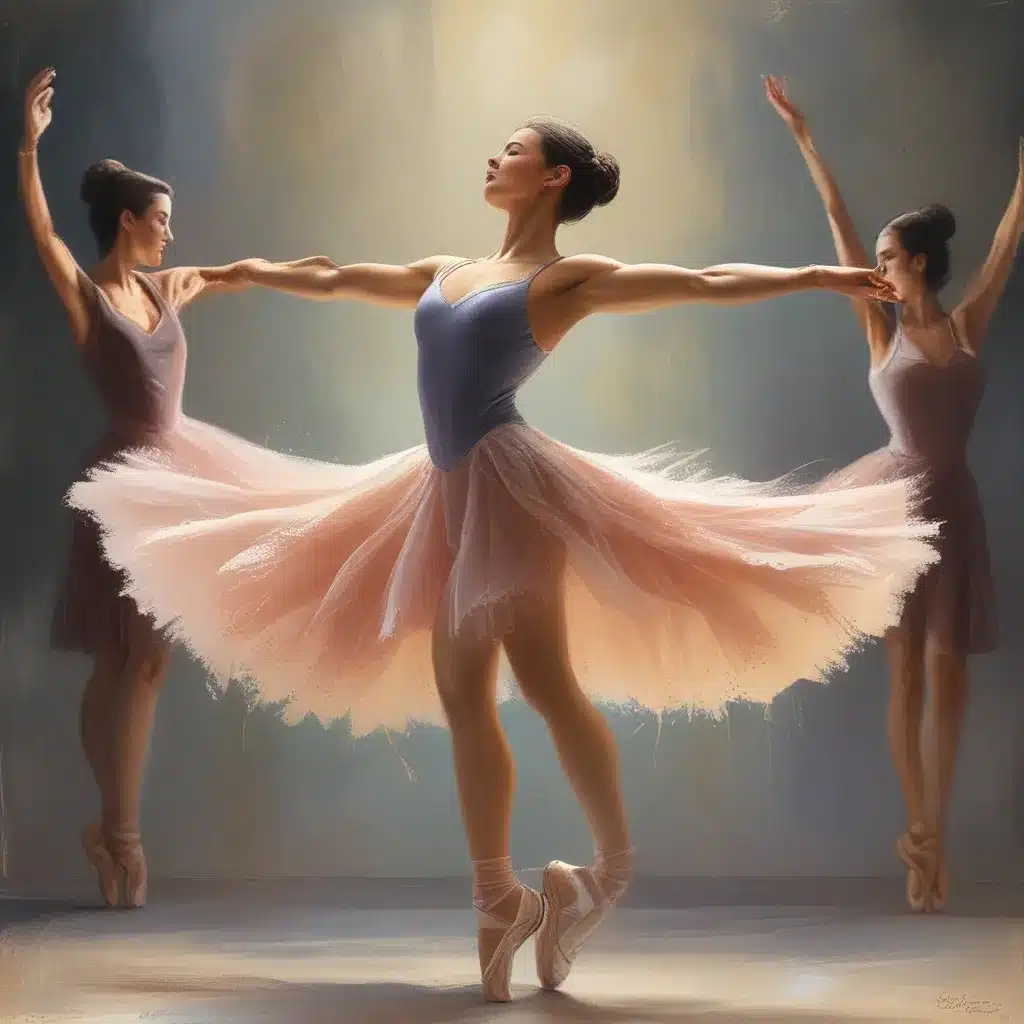
The Enchanting World of Lyrical Dance
As I step into the dance studio, the air is thick with anticipation. The mirrors reflect a room full of aspiring dancers, each one eager to unlock the secrets of the captivating art form known as lyrical dance. I can’t help but feel a sense of excitement as I prepare to embark on this journey, for I know that mastering the fusion of ballet, jazz, and lyrical styles will be a transformative experience.
Lyrical dance, a genre that has gained immense popularity in recent years, is often described as a mesmerizing blend of emotion and technique. At its core, it is a form of movement that seamlessly combines the storytelling power of contemporary dance with the precision and elegance of classical ballet. As I delve deeper into this captivating style, I can’t help but feel a sense of awe at the way it transcends the boundaries of traditional dance forms.
Balancing Emotion and Technique
One of the defining features of lyrical dance is the delicate balance it strikes between emotional expression and technical mastery. Unlike purely technical dance genres, lyrical dance encourages performers to connect with the music on a deeply emotional level, using their bodies as vessels to translate the song’s narrative into a visual language.
Achieving this harmonious blend of emotion and technique is the hallmark of a skilled lyrical dancer. It requires a dancer to possess not only the technical prowess to execute intricate movements with precision, but also the emotional intelligence to convey the underlying story with authenticity and vulnerability.
As I watch the dancers in the studio, I can’t help but be mesmerized by the way they seamlessly transition between moments of pure technical mastery and raw, powerful emotional expression. It’s as if they are weaving a tapestry of movement, each thread a carefully chosen element that contributes to the overall narrative.
Mastering the Top Lyrical Dance Moves
To truly excel in the world of lyrical dance, dancers must not only possess a deep understanding of the genre’s essence but also a mastery of its signature moves. From the graceful candlestick roll to the expressive lyrical walks, each technique serves as a building block in the dancer’s artistic toolkit.
Candlestick Roll
The candlestick roll is a captivating movement that begins with the dancer in a standing position and then smoothly transitions to the floor in a controlled backward roll. This move requires both strength and flexibility, as the dancer must maintain a sense of weightlessness and flow throughout the transition. It’s a testament to the dancer’s technical prowess, as they must execute the movement with precision while also infusing it with emotional resonance.
Lyrical Walks
Lyrical walks are fluid, purposeful movements that transport the dancer across the stage, reflecting their interpretation of the music’s emotional landscape. These walks are not merely a means of traveling from one point to another, but rather a chance for the dancer to connect with the audience and convey the nuances of the music through their steps. The key is to maintain a strong emotional connection while executing technically precise movements, creating a harmonious blend of artistry and technique.
Leg Swings and Extensions
Lyrical dance often incorporates sweeping leg movements and extensions to convey a sense of expansiveness and freedom, as well as to facilitate seamless transitions between different points in the music. These movements require both strength and control, emphasizing the importance of technique in achieving the desired visual impact. Dancers use their legs as expressive tools to convey the emotional nuances of the music, creating a mesmerizing and captivating performance.
Contractions and Releases
Contractions and releases involve the intentional tensing and relaxing of the muscles to create dynamic and emotive movements. Dancers use these contractions to punctuate the emotional beats of the music, adding depth and intensity to their performance. Mastering the balance between strength and vulnerability is crucial in executing this move effectively, as the dancer must seamlessly transition between moments of power and vulnerability.
Lifts and Partnering
Lyrical dance often incorporates lifts and partnering to create visually stunning moments that captivate the audience. These movements require a high level of trust and collaboration between dancers, as they must seamlessly integrate the lifts with the emotional narrative of the performance. The challenge lies in enhancing the overall impact of the piece without compromising the emotional authenticity that is the hallmark of lyrical dance.
Unlocking the Full Potential of Lyrical Dance
As I continue to explore the world of lyrical dance, I can’t help but be in awe of the way it seamlessly blends the technical precision of ballet with the expressive power of jazz and the emotional depth of contemporary dance. It’s a genre that demands not only physical prowess but also a deep artistic sensibility, a connection to the music that transcends the boundaries of traditional dance forms.
At the Musical Theater Center, we are dedicated to helping aspiring dancers master the fusion of ballet, jazz, and lyrical styles. Through our comprehensive training program and expert instruction, we empower our students to unlock the full potential of this captivating art form, to become storytellers who can captivate audiences with their graceful movements and authentic emotional expression.
Whether you’re a seasoned dancer or just starting your journey, I invite you to join me in this exploration of lyrical dance. Together, let’s dive into the enchanting world of movement, where the boundaries between technique and emotion blur, and the fusion of styles creates a mesmerizing tapestry of artistry.

